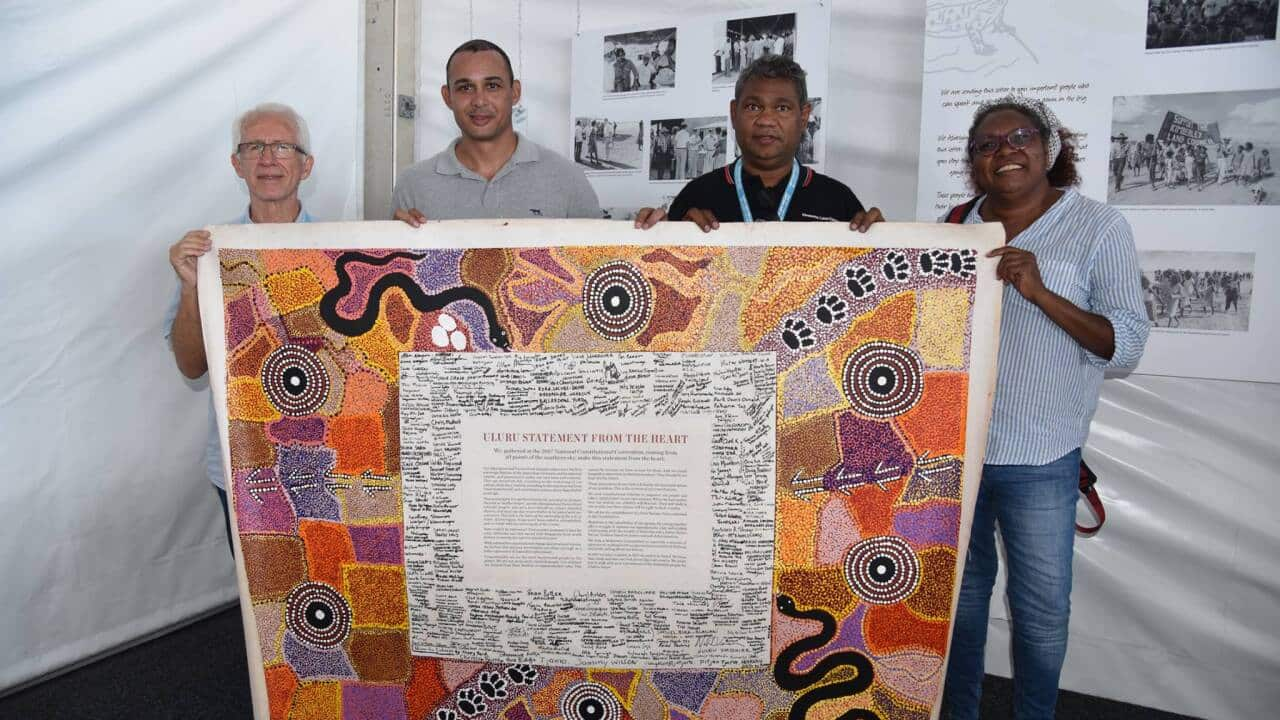Today, the High Court of Australia will the most significant case concerning Indigenous land rights since the and native title cases in the 1990s.
For the first time, the High Court will consider how to approach the question of compensation for the loss of traditional land rights. The decision will have huge implications for Indigenous peoples who have lost their land rights and for the state and territory governments responsible for that loss.
For Queensland and Western Australia in particular, the outcome will likely provide clarity on the significant amounts of compensation they may be liable for in the future.
Western Australia, for example, has that are collectively larger than the entire state of South Australia. Within those boundaries, there are a number of potential native title claims that could be compensable in the future.
In 2011, the state’s attorney-general, Christian Porter, described potential compensation claims as a “one billion dollar plus issue”.
Right to compensation
The Mabo decision first recognised, and the Wik decision later clarified, how Australia’s common law acknowledges and protects the traditional land rights of Indigenous peoples. Following some uncertainty and political clamour caused by both of those decisions, the provided a legislative structure for the future recognition, protection and compensation of native title.
The act provides a for the “impairment and extinguishment” of native title rights in a range of circumstances. However, it provides little guidance on what compensation means in practice. Parliament decided to leave the details to the courts.
Surprisingly, it was not until the end of 2016 that the first-ever compensation claim wound its way to the point of judicial determination – in the Timber Creek decision.
The Timber Creek decisions
The case coming before the High Court today is an appeal following two earlier decisions by the Federal Court.
In (the first Timber Creek decision), Federal Court Justice John Mansfield of compensation for loss of native title rights.
Mansfield awarded the Ngaliwurru and Nungali peoples $3.3m in August 2016 for various acts of the NT government going back to the 1980s. These acts included grants of land and public works affecting areas totalling 1.27 square kilometres near the remote township of Timber Creek.
Mansfield approached the compensation award in three steps:
- Firstly, he worked out the value of the land rights in plain economic terms. He did this by looking to the freehold market value of the land, but discounting it by 20 per cent to reflect the lower economic value of the native title. This is due to the fact its use is limited to rights under traditional law and custom, such hunting and conducting ceremonies, but does not include a right to lease the land, for example.
- Secondly, he considered how to compensate for the loss of the non-economic aspects of native title, such as cultural and spiritual harm. This involved having to:
…quantify the essentially spiritual relationship which Aboriginal people … have with country and to translate the spiritual or religious hurt into compensation.
- Thirdly, he gave an award of interest to reflect the passage of time since the acts of the NT government occurred.
The decision was quickly appealed to the , which corrected a few errors and to just over AU$2.8m. But in broad terms, it approved the three-step approach Mansfield used to calculate the award.
Whether the High Court will follow the same path remains to be seen. A number of new parties, including various state governments, have now become involved in the proceedings, each with their own barrow to push.
The challenge of valuing native title
The challenge is that conventional methods for valuing land may not be suitable to reflect the unique nature of native title rights and the significance of those rights to Indigenous peoples. New principles, or adapted versions of old ones, may be needed.
For example, in most cases where a piece of land is resumed by a government for an infrastructure project or some other purpose, the principal measure of compensation is the .
But in the case of native title rights, there is no market to value the land. Native title cannot be sold, mortgaged or leased. Further, native title is different in every case, with no uniform content. Native title rights can include everything from a right to exclusive possession of land to a very limited right to conduct traditional ceremonies on a piece of land.
READ MORE

Native Title is not 'land rights'
Whether the Federal Court has taken the right approach – or whether a new approach should be adopted – will be the subject of debate in the High Court.
The Ngaliwurru and Nungali people contend the correct approach would have seen them awarded roughly AU$4.6m. The NT government is arguing, however, that the amount should be no more than about AU$1.3m.
The politics of Timber Creek
One sore point is between the federal government and the states and territories over who will pay any compensation. Under both the Keating and Howard governments, the Commonwealth 75 per cent of the compensation a state or territory may be required to pay in future claims (with some exceptions).
But in 2011, Porter tabled in the WA parliament a letter from Prime Minister Julia Gillard renouncing any Commonwealth obligation .
Porter may now find himself on the opposite side of the table, having shifted from state supplicant to his new position as a .
Just how much political friction there will be will depend on the High Court’s approach to determining compensation and the potential cost if hundreds of other native title groups pursue compensation claims in the future.
, Postgraduate Research Student, T.C. Beirne School of Law, The University of Queensland.
, Program Director, Energy & Resource TC Beirne School of Law, The University of Queensland.











